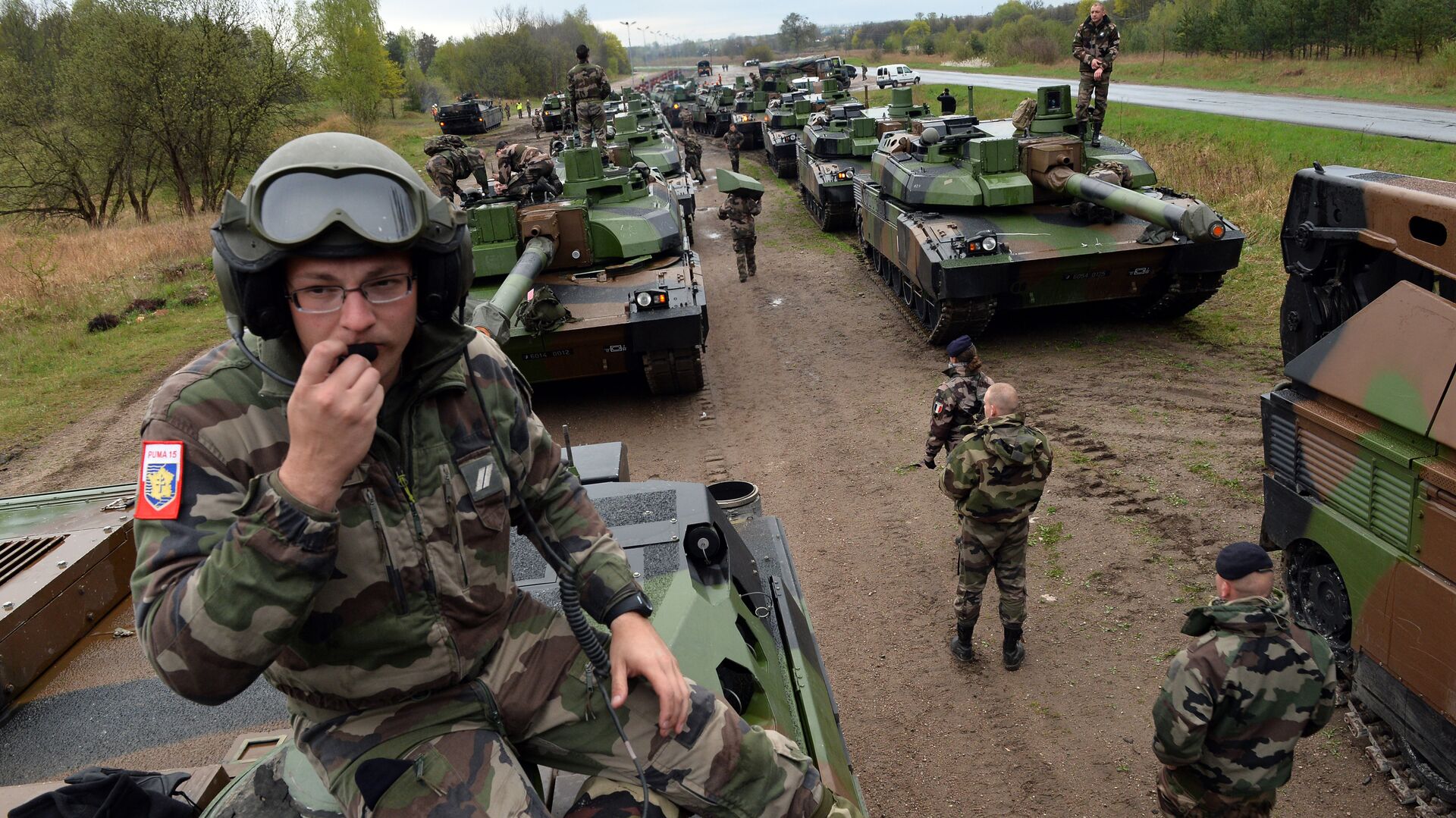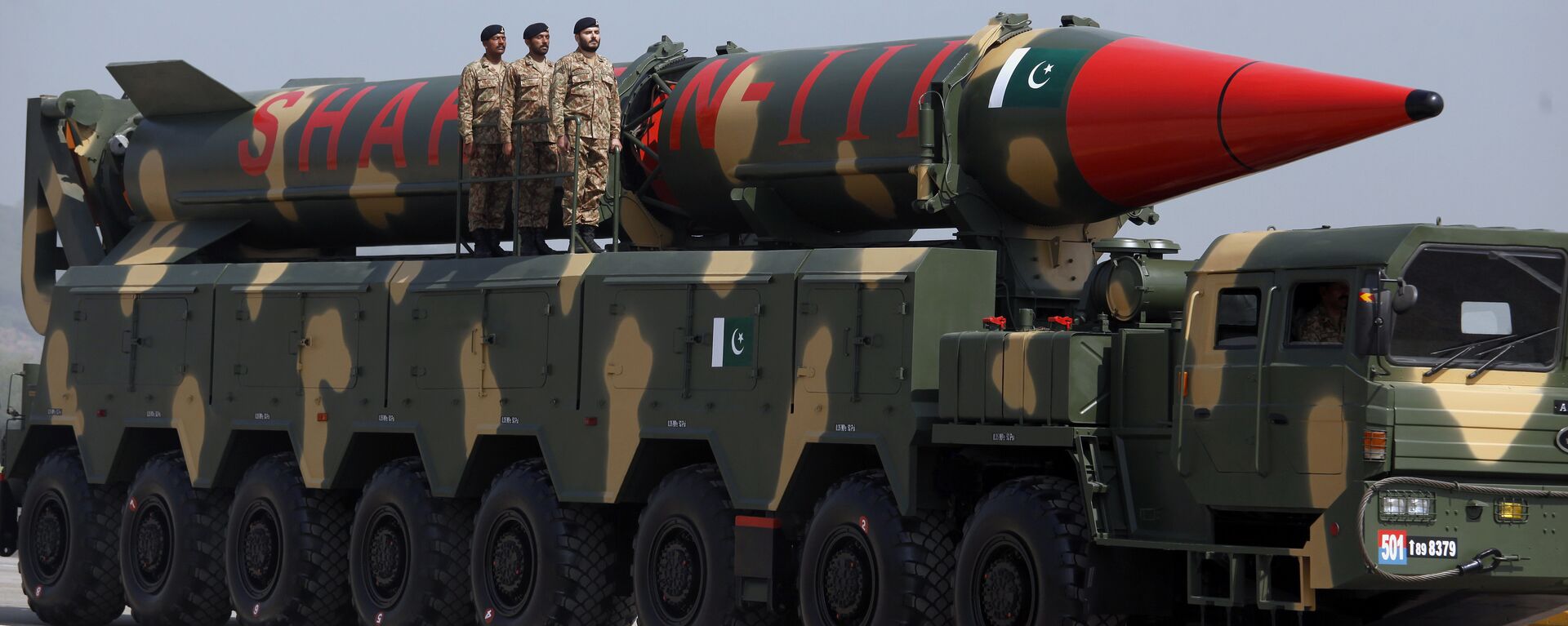‘It Will Divide Europe’: NATO Chief Fumes Over Concept of European Army
10:25 GMT 05.09.2021 (Updated: 10:45 GMT 05.09.2021)

© AFP 2023 / JANEK SKARZYNSKI
Subscribe
The idea of a European army independent of the US-led NATO alliance has been around since the early 1950s, but was largely forgotten during the Cold War. The concept reemerged with the signing of the 2007 Treaty of Lisbon, which proposed the defence integration of EU member states. Germany and France have recently come out in support of the idea.
NATO Secretary-General Jens Stoltenberg has expressed concerns over the creation of a European army, saying a European Union-only military force had the potential to “divide Europe” and overstretch the “scarce” $1 trillion in defence spending resources the alliance has at its disposal.
Speaking to The Telegraph in an interview published late Saturday, Stoltenberg insisted that he was not opposed to “more European efforts on defence,” but warned that a EU rapid reaction force like the one recently advocated for by EU foreign affairs and security policy chief Josep Borrell would be detrimental to the alliance.
At an informal meeting of EU defence ministers in Slovenia on Thursday, Borrell suggested that the recent dramatic events in Afghanistan, including the unexpectedly rapid collapse of the Western-backed government and the chaotic withdrawal of Western troops, could serve as a catalyst for the bloc to set up its own common defence, including via the creation of a rapid reaction force.
“Sometimes there are events that catalyse history, that create a breakthrough, and I think that Afghanistan is one of these cases,” Borrell underscored. According to reports, the new European rapid reaction force could include up to 20,000 troops, and be provided with the capability to deploy quickly anywhere in the world. A draft proposal on this so-called “first entry force” is expected to be presented in November.
In his interview with The Telegraph, Stoltenberg expressed alarm over the idea.
“I welcome more European efforts on defence but that can never replace NATO and we need to make sure that Europe and North America band together. Any attempt to weaken the bond between North America and Europe will not only weaken NATO, it will divide Europe,” Stoltenberg said.
The official admitted that “this is partly about money,” pointing out that 80 percent of the NATO bloc’s defence spending comes from “non-EU allies,” – chief among them the United States.
#OTD 72 years ago @NATO was founded with a declared purpose of “securing peace”.
— MFA Russia 🇷🇺 (@mfa_russia) April 4, 2021
⚫️By now, on its account: bombing of Yugoslavia, invasion of Iraq, intervention in Libya - and more.
🛦 In 2020, #NATO “defence” expenditures increased by yet another 7,4%. pic.twitter.com/YEBOT4aQiZ
Stoltenberg added that in his view, the non-EU members surrounding the bloc help to defend it. “It’s about geography – Norway, Iceland in the North, Turkey in the South, the US, Canada, UK, in the West, are essential for the defence of Europe…But it’s also about politics. Because any weakening of the transatlantic bond will also divide Europe,” the official implored.
The secretary general further argued that the creation of “parallel structures” and efforts to “duplicate the command structure” would only serve to “weaken our joint capability to work together,” given the “scarce resources” the alliance has. He admitted that he and NATO have not seen or discussed any detailed or specific proposals on a European army yet.
Deflecting Blame on the Afghanistan Debacle
In his interview, Stoltenberg also sought to deflect the blame for the dramatic collapse of the Afghan government, suggesting that the unexpectedly rapid Taliban takeover was “of course…related to the fact that NATO allies decided to end this military mission in Afghanistan,” as well as failures by Afghanistan’s former political and military leaders, plus a supposed lack of logistical support to the Afghan army.
Stoltenberg went on to blame Pakistan, saying “many questions” must be asked about whether Islamabad assisted the Taliban militarily, and noting that the “special relationship” between the militants and Pakistan was “of course…part of the story.”
The secretary admitted that “after investing heavily in the Afghan security forces over 20 years”, it was a “reasonable” expectation on NATO’s part “that they would have been able to withstand the Taliban for a longer time”. Stoltenberg revealed that the alliance has now launched a “lessons learned process” designed to offer a “clear-eyed and honest” analysis of the alliance’s failures in Afghanistan over its generation-long presence, and the spending at least $1 trillion (other estimates go as high as $2.2 trillion). He added, however, that this process would involve “recognis[ing] the gains we have made over these years”. He did not specify what these “gains” were.
Amid the alliance’s humiliating withdrawal from the country, Stoltenberg recommends that “the whole international community, including Russia and China”, now need “to work” to stop Afghanistan from once again becoming a safe haven for terrorist groups.
The United States and its NATO and other Western allies invaded Afghanistan in late 2001, in the aftermath of the 9/11 terrorist attacks, on the pretext of the Taliban’s refusal to hand over al-Qaeda terror leader Osama bin Laden. Bin Laden soon fled into Pakistan, and was reportedly killed by a US SEAL Team in May of 2011, with his body dumped into the Indian Ocean and photos of the deceased terror leaders never found, ostensibly to prevent from “offending” other terrorists. In the nearly 20 years that the US and its allies have occupied Afghanistan, as many as 100,000 Afghan civilians, more than 70,000 Afghan security forces personnel, tens of thousands of Taliban fighters, over 3,500 Western coalition troops, and 4,000+ Western mercenaries were killed.



